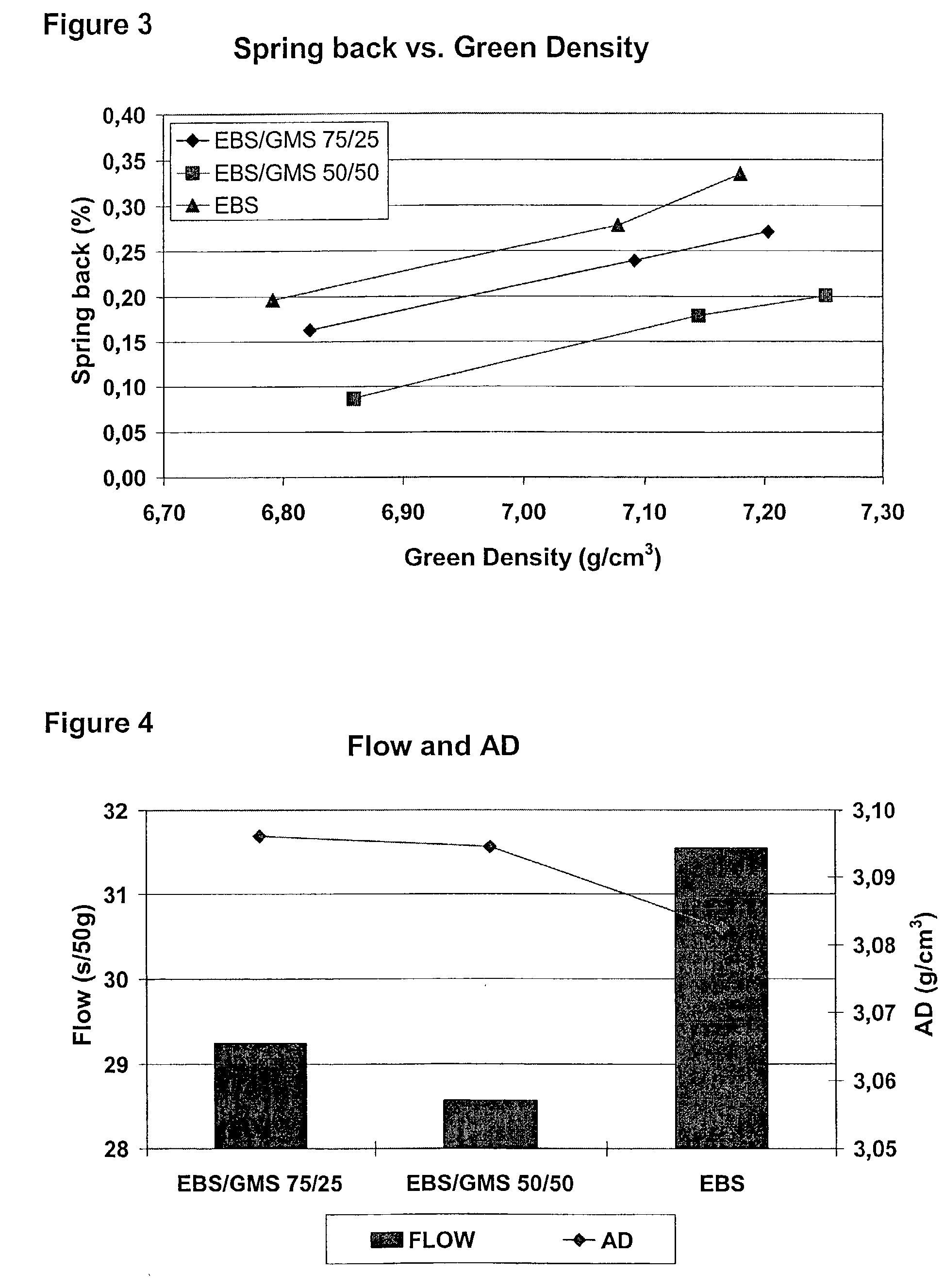Powder composition
a technology of composition and powder metal, which is applied in the direction of lubricant composition, transportation and packaging, metal-working apparatus, etc., can solve the problems of rust formation in the die cavity, aqueous dispersions are a source of rust formation, and the thickness of the film within the die cavity has a tendency to vary, so as to achieve high and consistent densities
- Summary
- Abstract
- Description
- Claims
- Application Information
AI Technical Summary
Benefits of technology
Problems solved by technology
Method used
Image
Examples
Embodiment Construction
[0027] The following example, which is not intended to be limiting, present certain embodiments and advantages of the present invention. Unless otherwise indicated any percentages are on a weight basis.
[0028] The mixtures listed in table 1 below were prepared:
1TABLE 1 Sample GMS* EBS** 1 0 100 2 25 75 3 50 50 *Glyceryl monostearate **Etylene bisstearamide
[0029] The iron-based powder in all samples was ASC100.29 which is a water atomised, high purity iron powder available from Hogans AB, Sweden. The total amount of lubricant was 0.8% which was admixed in the powder composition together with 0.5% graphite(C-uf4) . The dry ingredients in the different test mixtures i.e. the iron powder, the lubricant and the graphite were blended to homogenous mixtures and added to a die cavity before compaction. The compaction operation was performed with the different powder mixtures at 400, 600 and 800 MPa at ambient temperature.
[0030] The different test mixtures were tested as regards green density...
PUM
| Property | Measurement | Unit |
|---|---|---|
| density | aaaaa | aaaaa |
| density | aaaaa | aaaaa |
| melting point | aaaaa | aaaaa |
Abstract
Description
Claims
Application Information
 Login to View More
Login to View More - R&D
- Intellectual Property
- Life Sciences
- Materials
- Tech Scout
- Unparalleled Data Quality
- Higher Quality Content
- 60% Fewer Hallucinations
Browse by: Latest US Patents, China's latest patents, Technical Efficacy Thesaurus, Application Domain, Technology Topic, Popular Technical Reports.
© 2025 PatSnap. All rights reserved.Legal|Privacy policy|Modern Slavery Act Transparency Statement|Sitemap|About US| Contact US: help@patsnap.com



